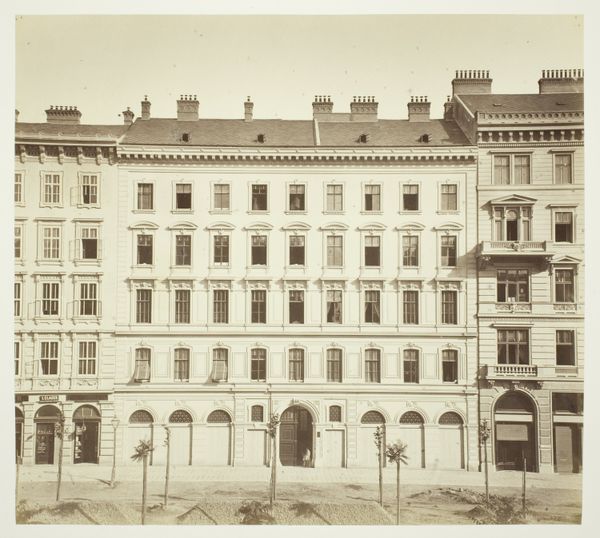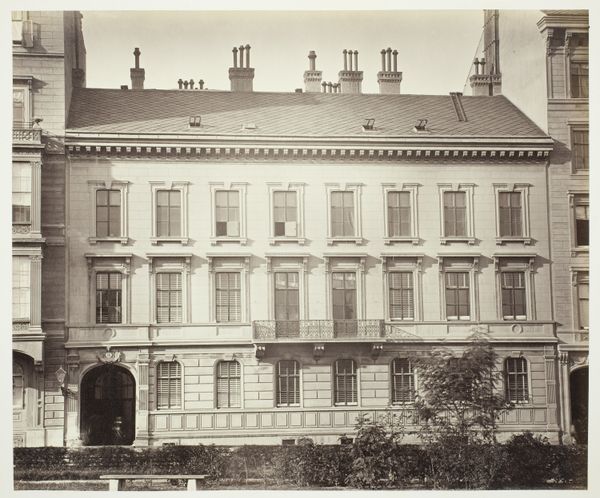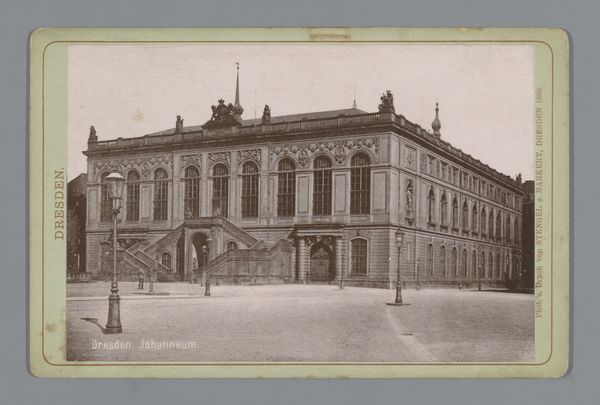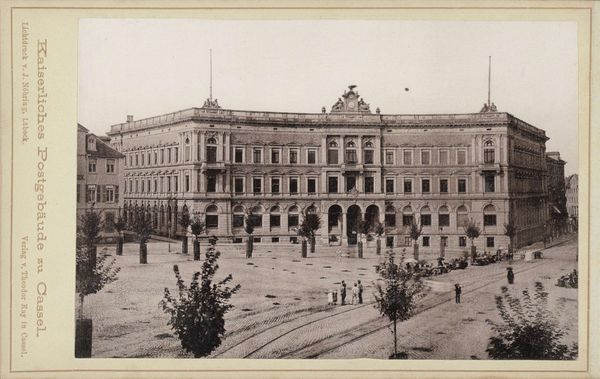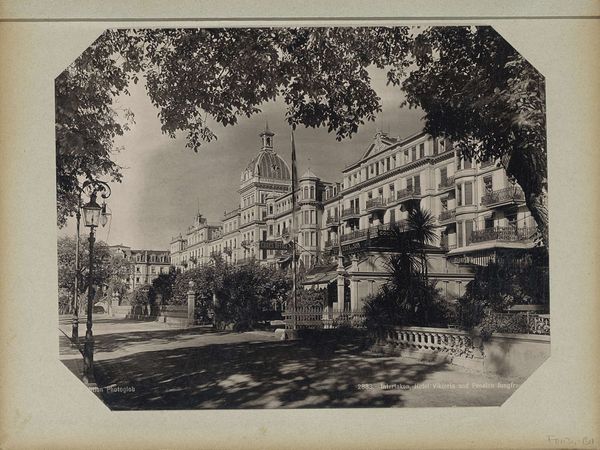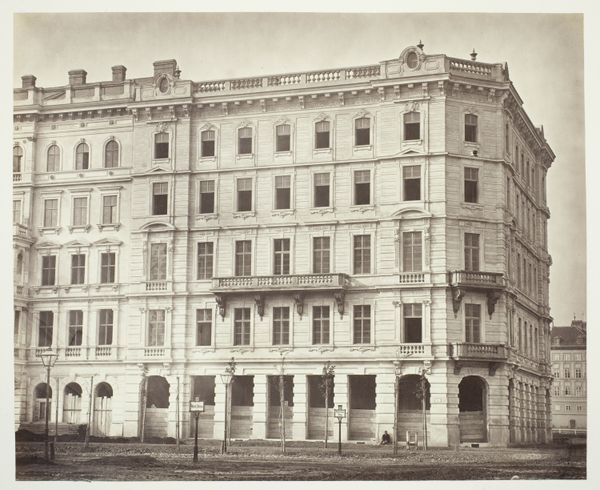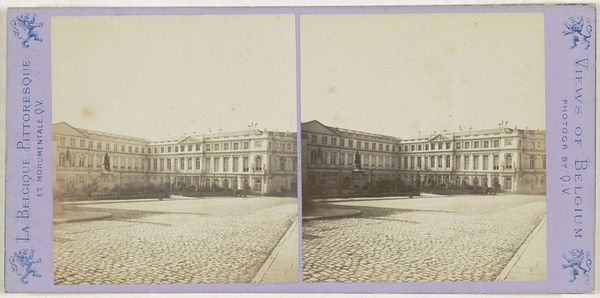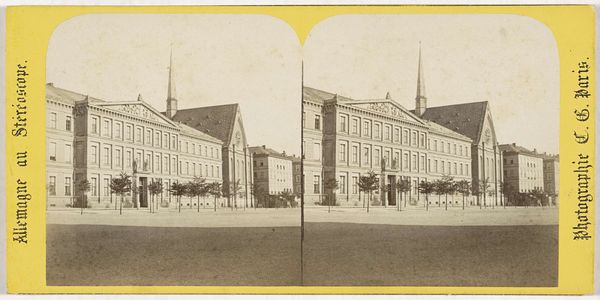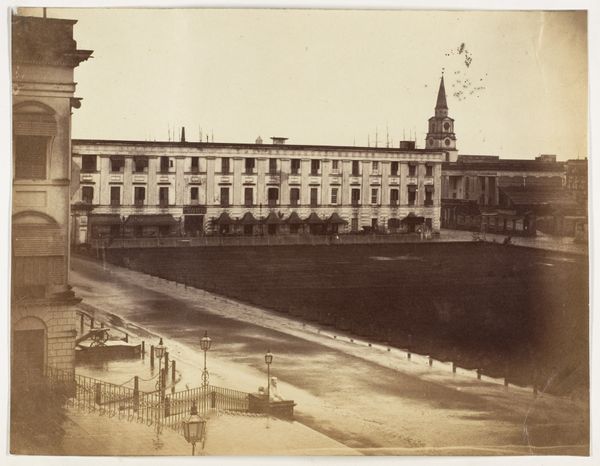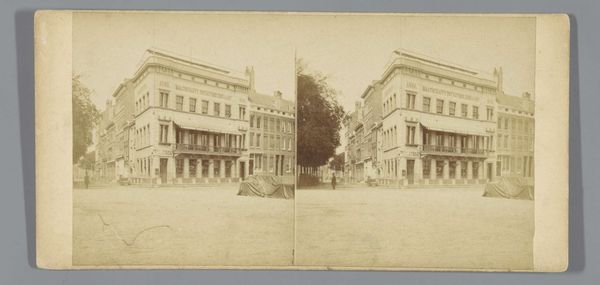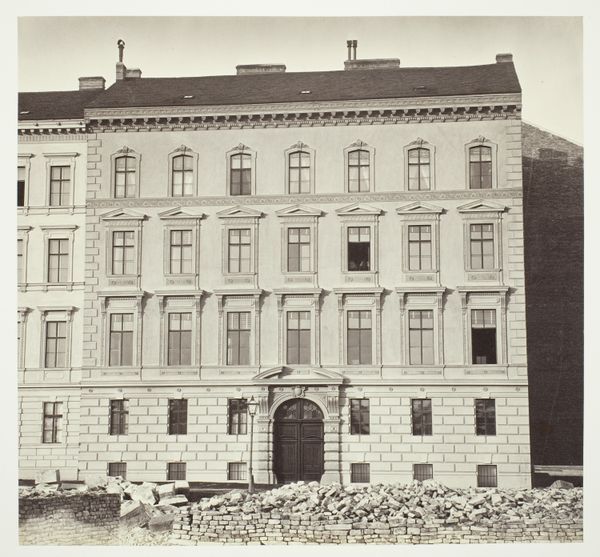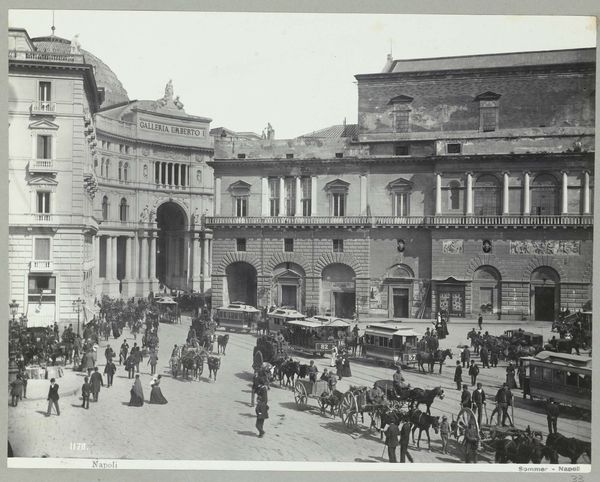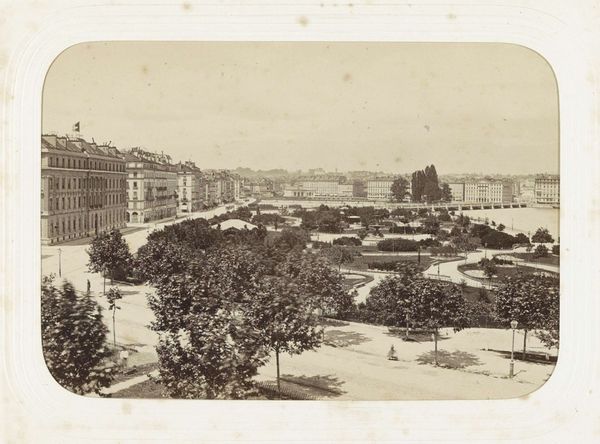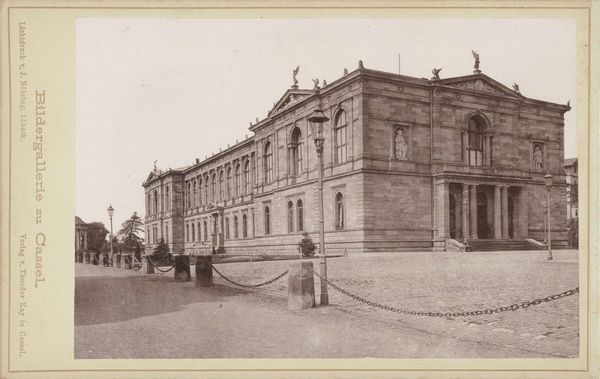
Dimensions: height 97 mm, width 143 mm
Copyright: Rijks Museum: Open Domain
Curator: Looking at this gelatin-silver print from between 1870 and 1890 by Johan Nöhring, titled *Friedrich Wilhelmsplatz in Kassel*, one is immediately struck by the symmetrical composition. Editor: Yes, a powerful grid seems to define the whole scene, softened somewhat by the rounded fountain and landscaping, but the greyscale evokes a mood of starkness, almost a geometrical melancholy. Curator: Observe how the receding perspective lines, originating from the cobblestone street and edges of the buildings, converge at a vanishing point, meticulously constructed. This effect gives order to what could have been visual chaos of a cityscape. It reinforces an intended idealised sense of harmony. Editor: The method of photographic production plays a vital role here too; each building looks solid, almost impenetrable. You see the craft and work in the built environment, the heavy use of materials in creating urban spaces. These spaces were shaped not just by architects, but by labourers, by those moving material, the very hands and resources required for such an endeavour. Curator: That's a wonderful observation. I see the neoclassical influences expressed through symmetry and balance that suggest a structured world, a visual echo of social structures. And what a dynamic use of light: soft gradations suggesting depth, form and architectural detail that bring vitality. Editor: The details captured by this print—those tiny trees in the small enclosures—were deliberately made. It underscores how constructed cityscapes affect us both collectively and individually. Consider the politics of building in general and town squares specifically; it subtly evokes thoughts of the community which is its reason to exist. Curator: Ultimately, Nöhring presents a world controlled by reason and aesthetics. It highlights how effective such compositional discipline can be when rendering the mundane profound, raising awareness for often overlooked historical details. Editor: Exactly! It leaves us reflecting on labour and materials—all that makes this photograph, and its subject, possible. It is about capturing not only place, but purpose.
Comments
No comments
Be the first to comment and join the conversation on the ultimate creative platform.
